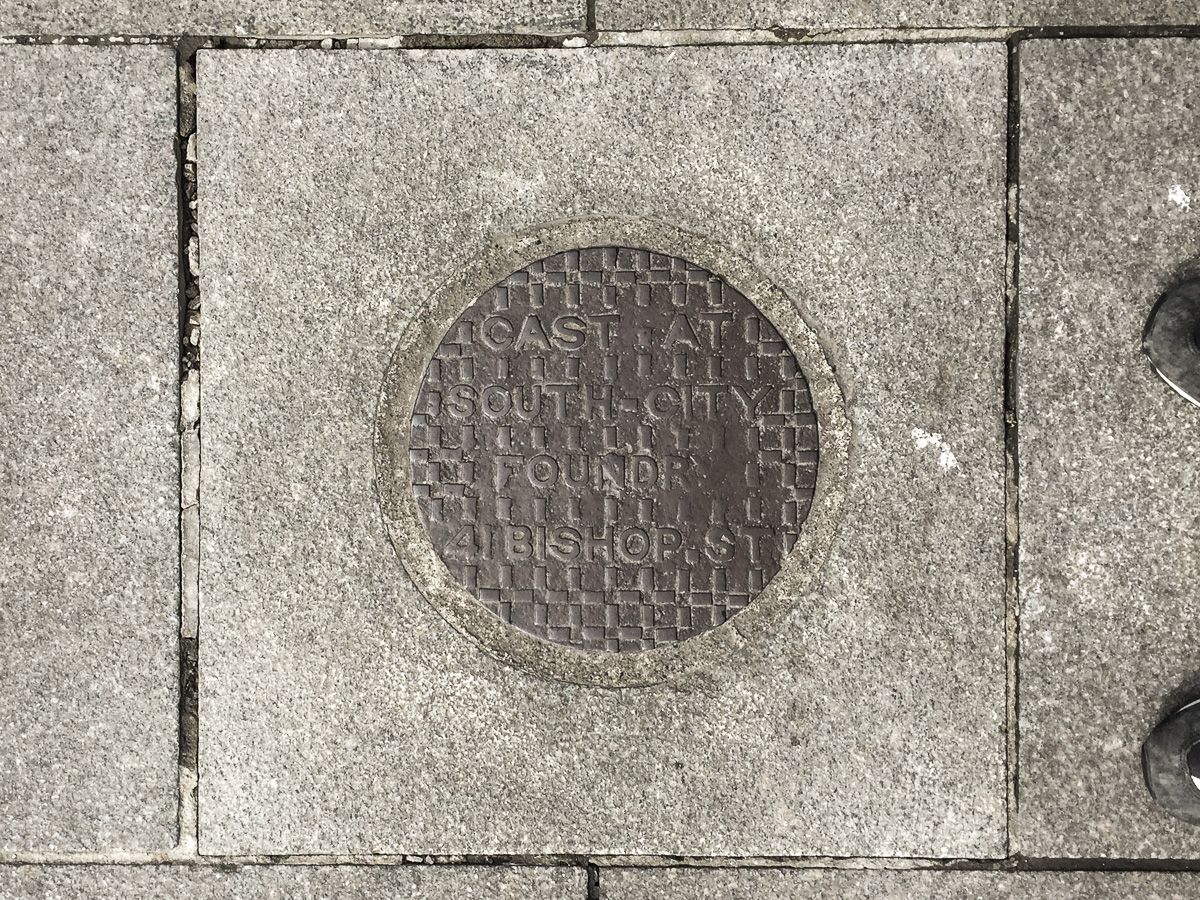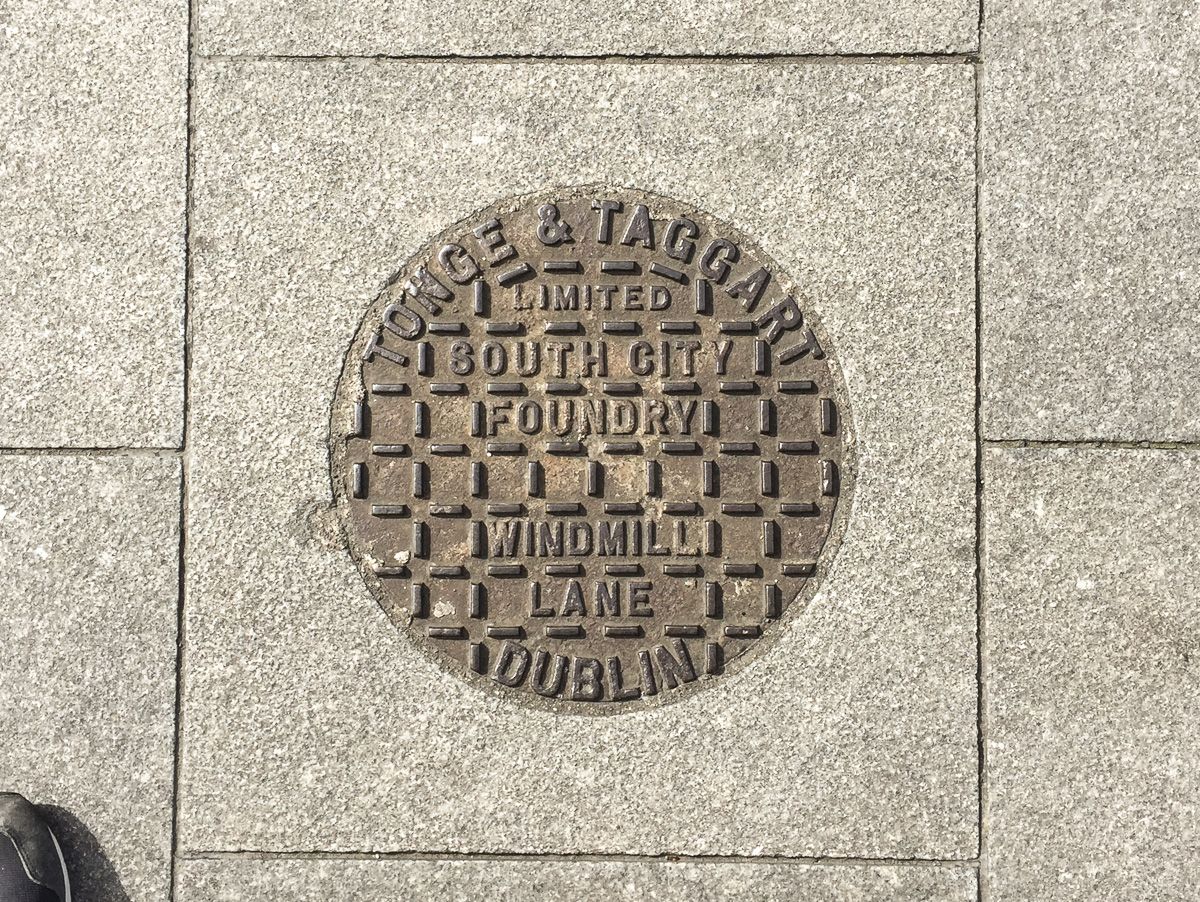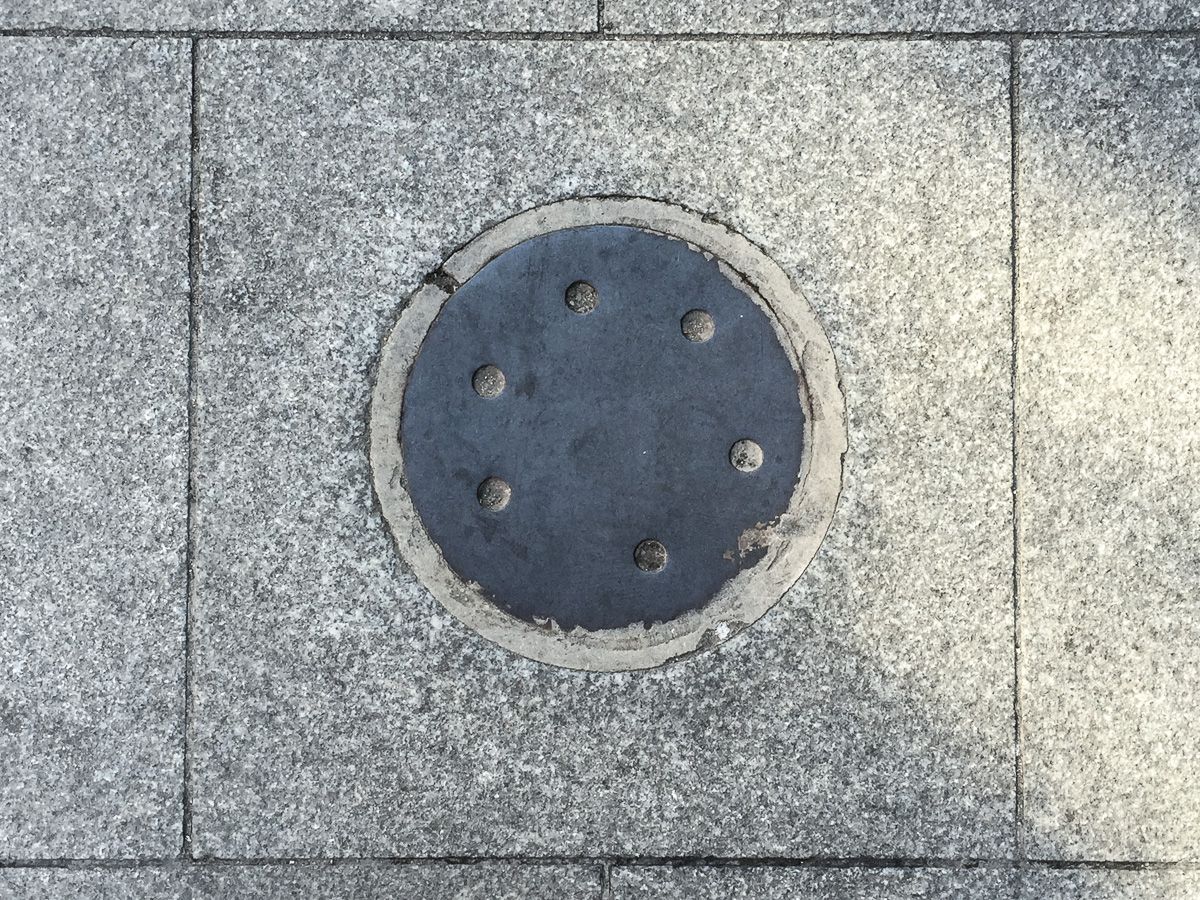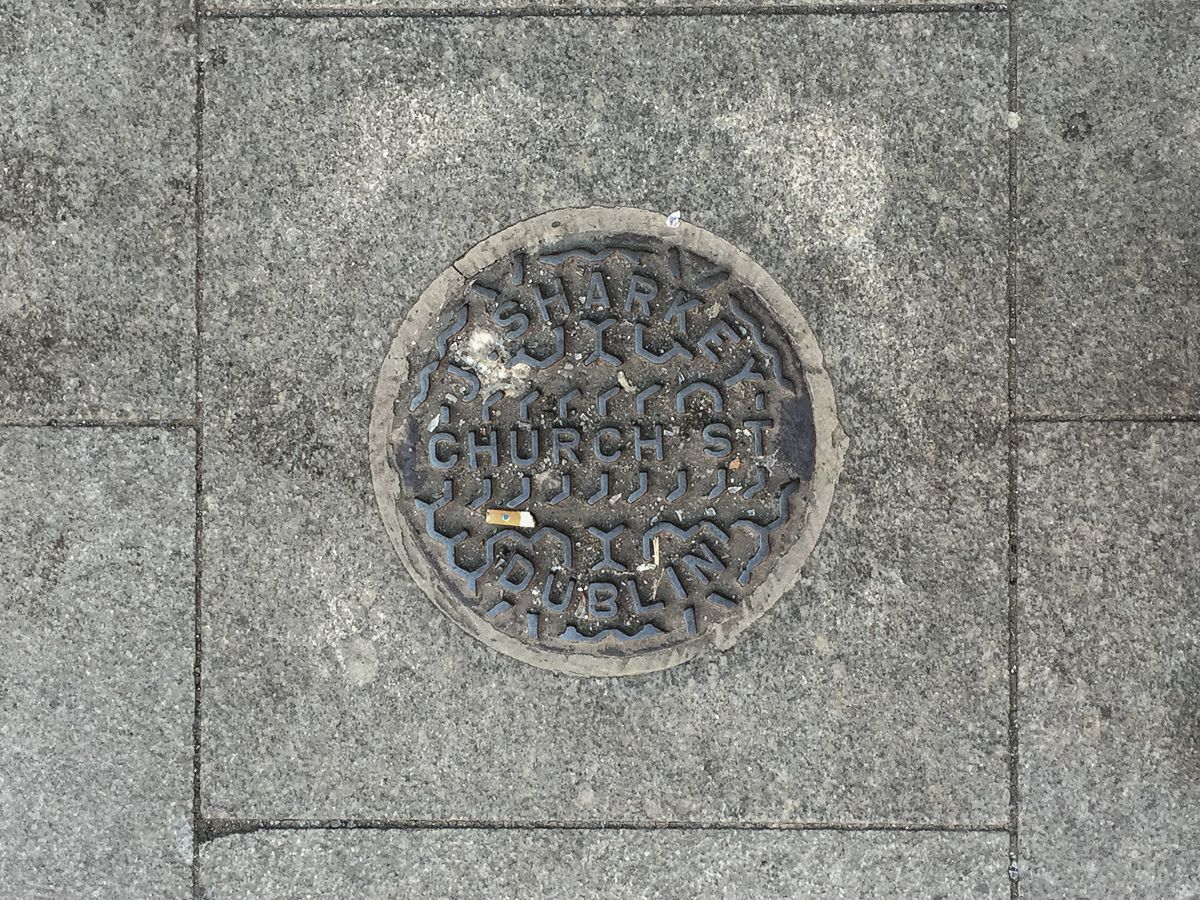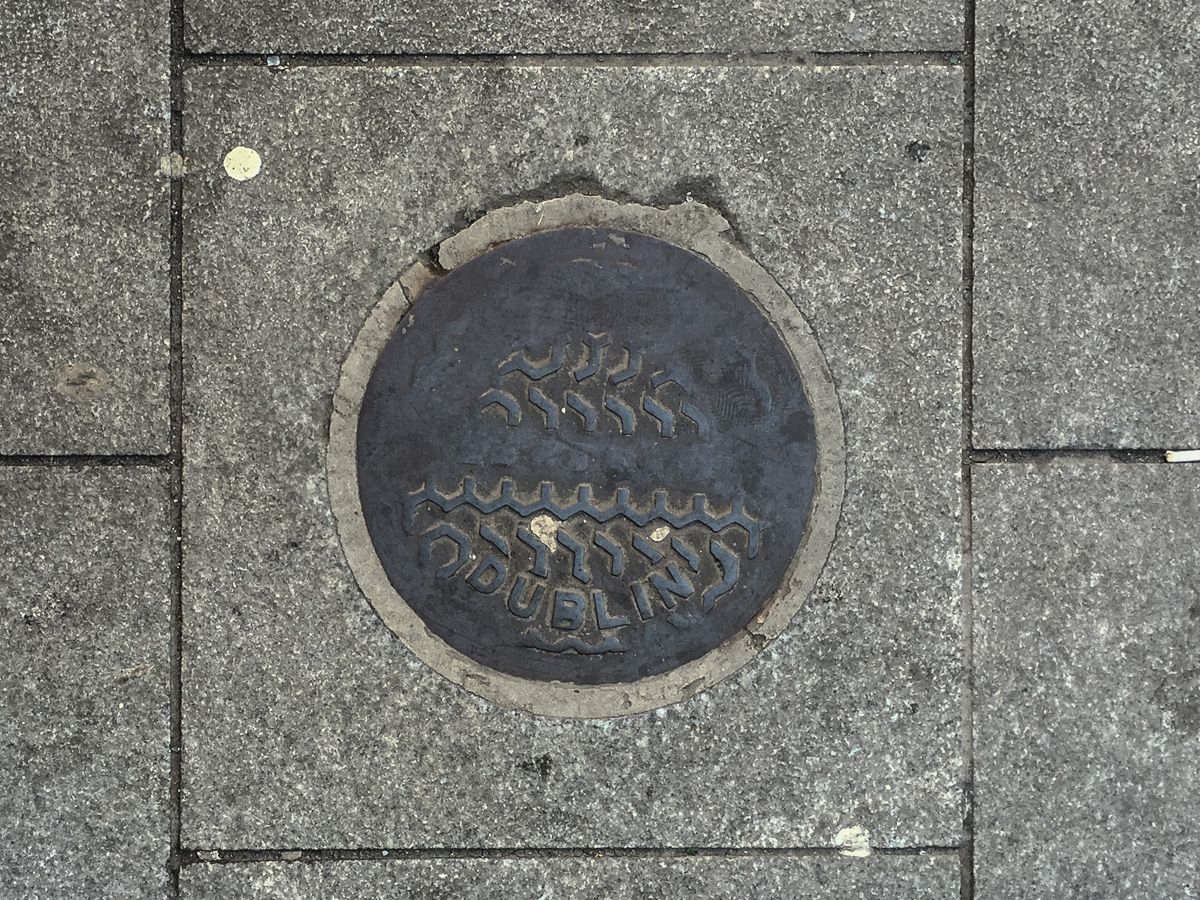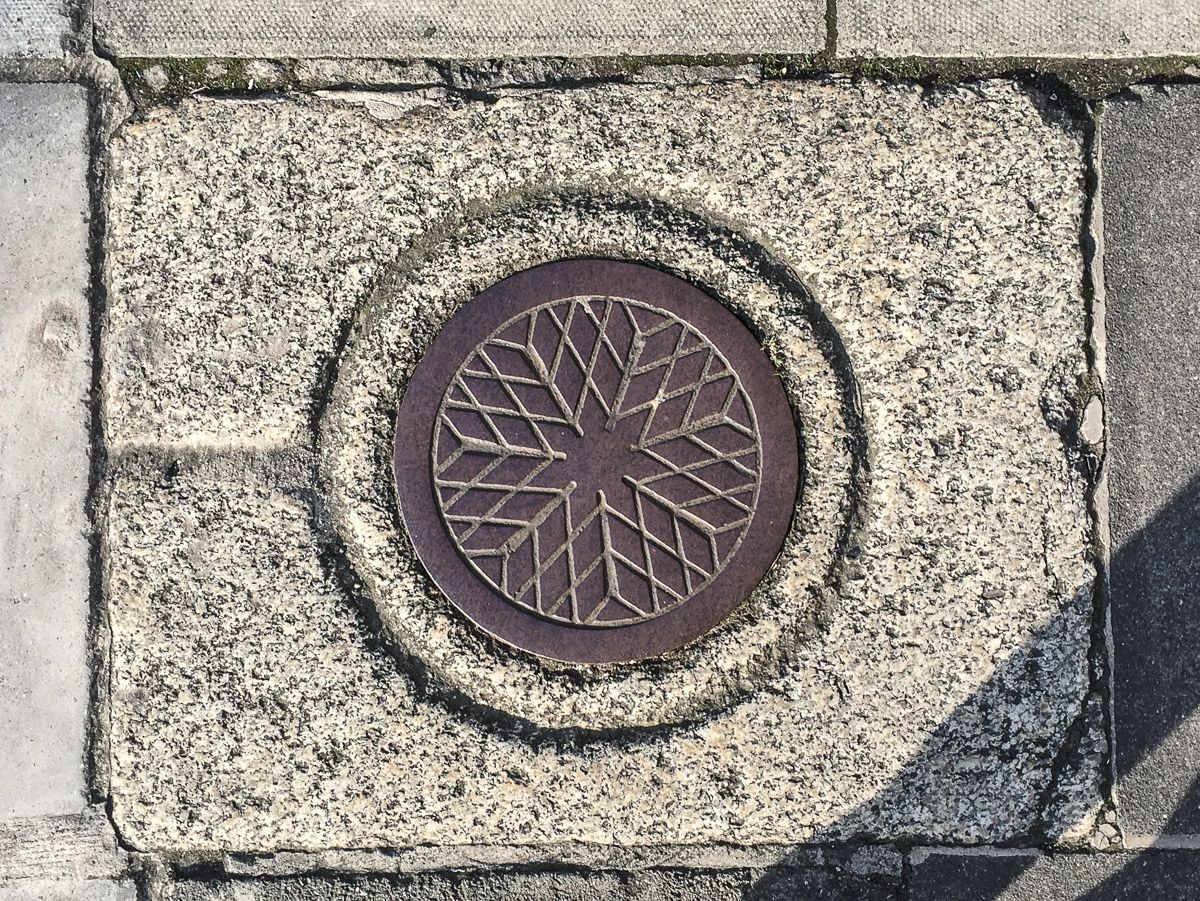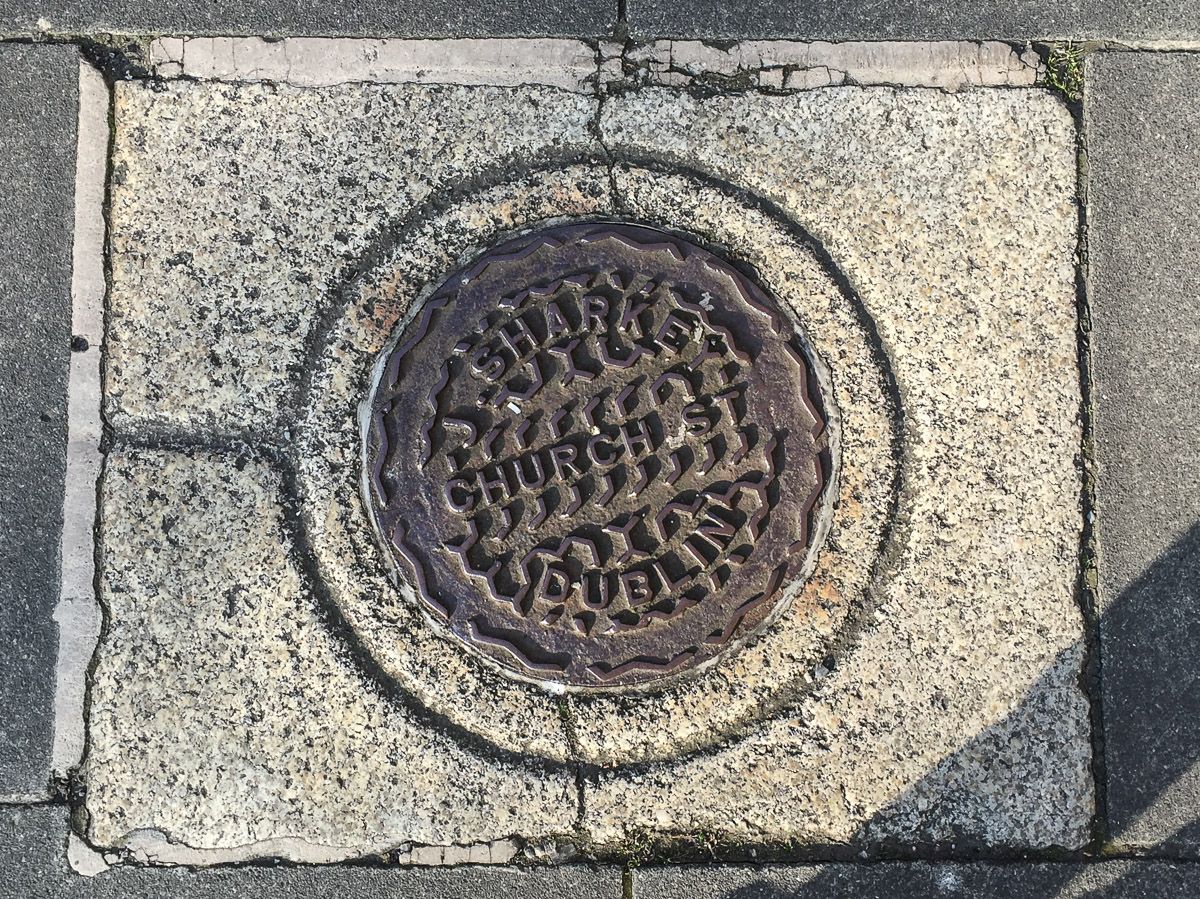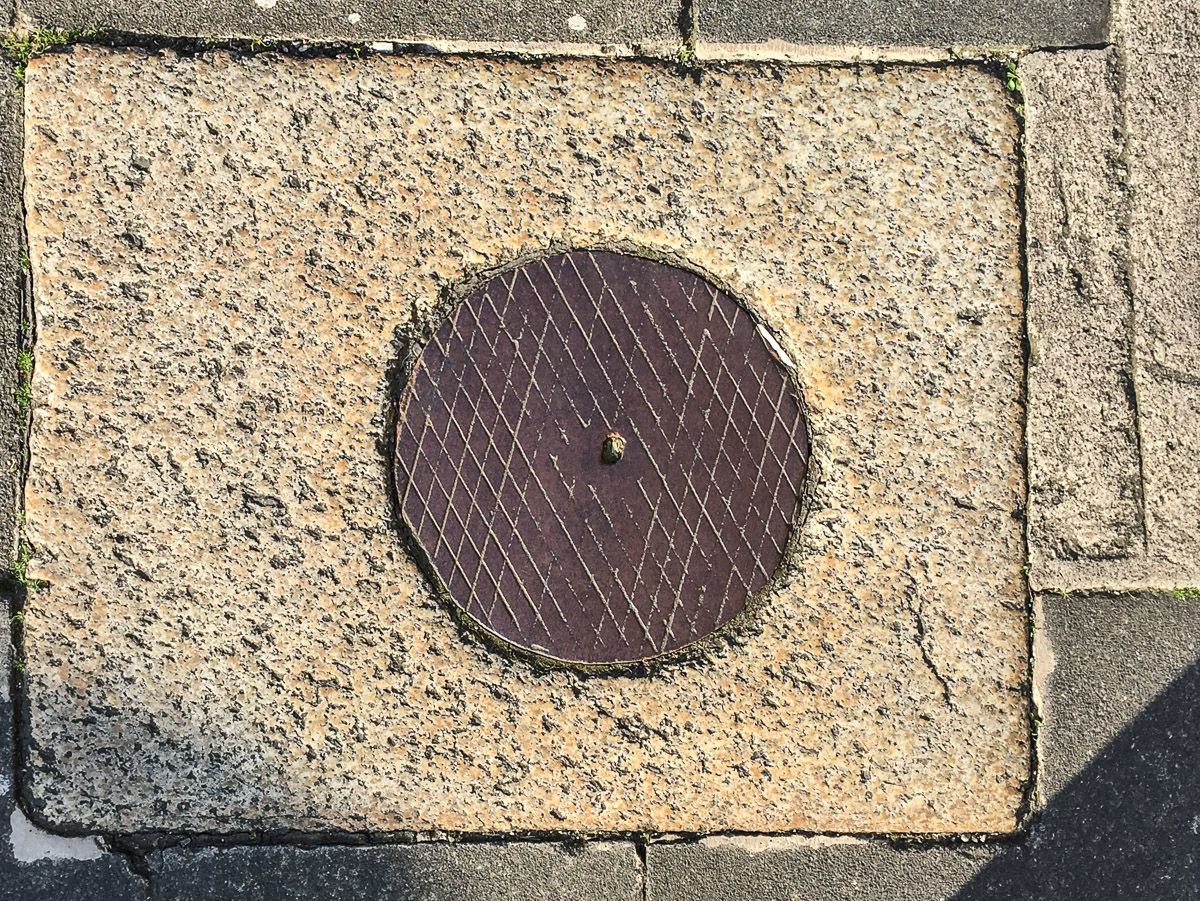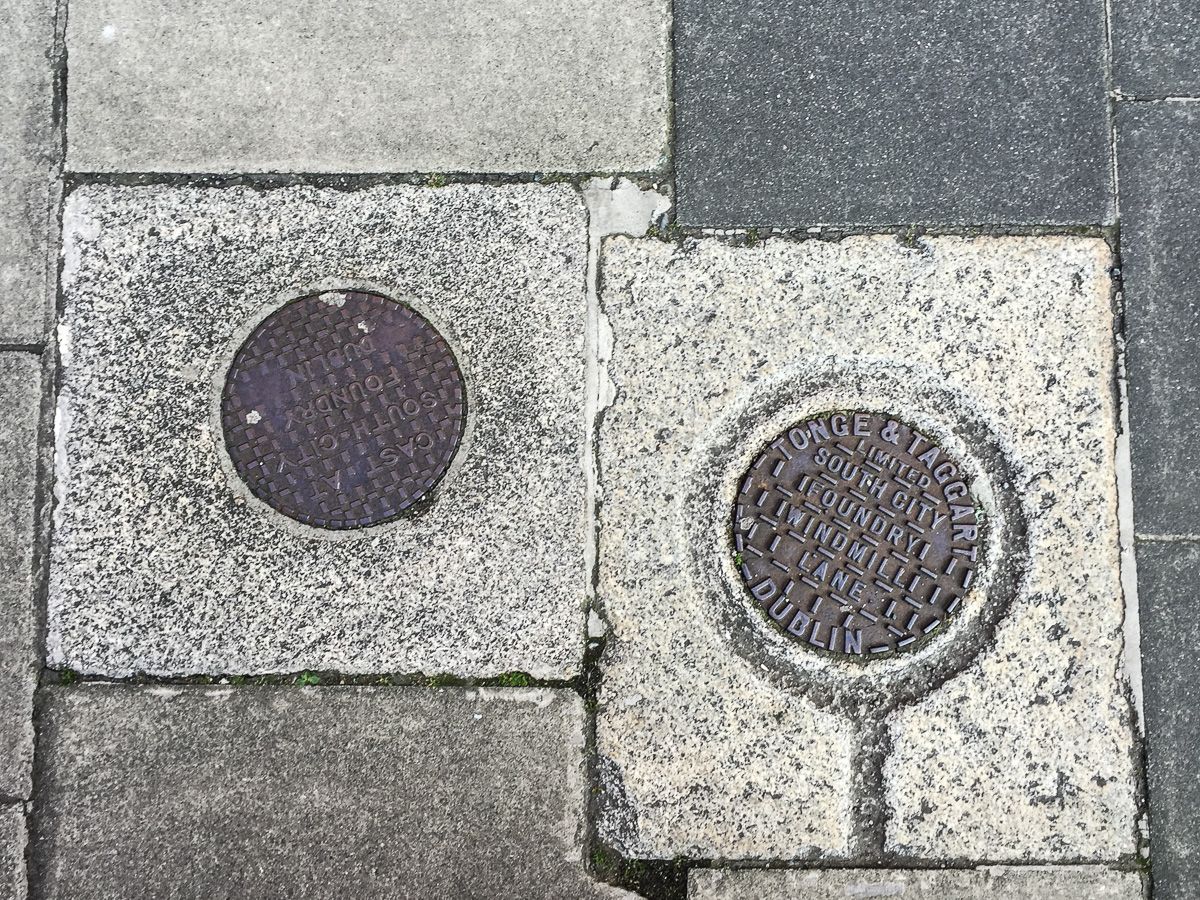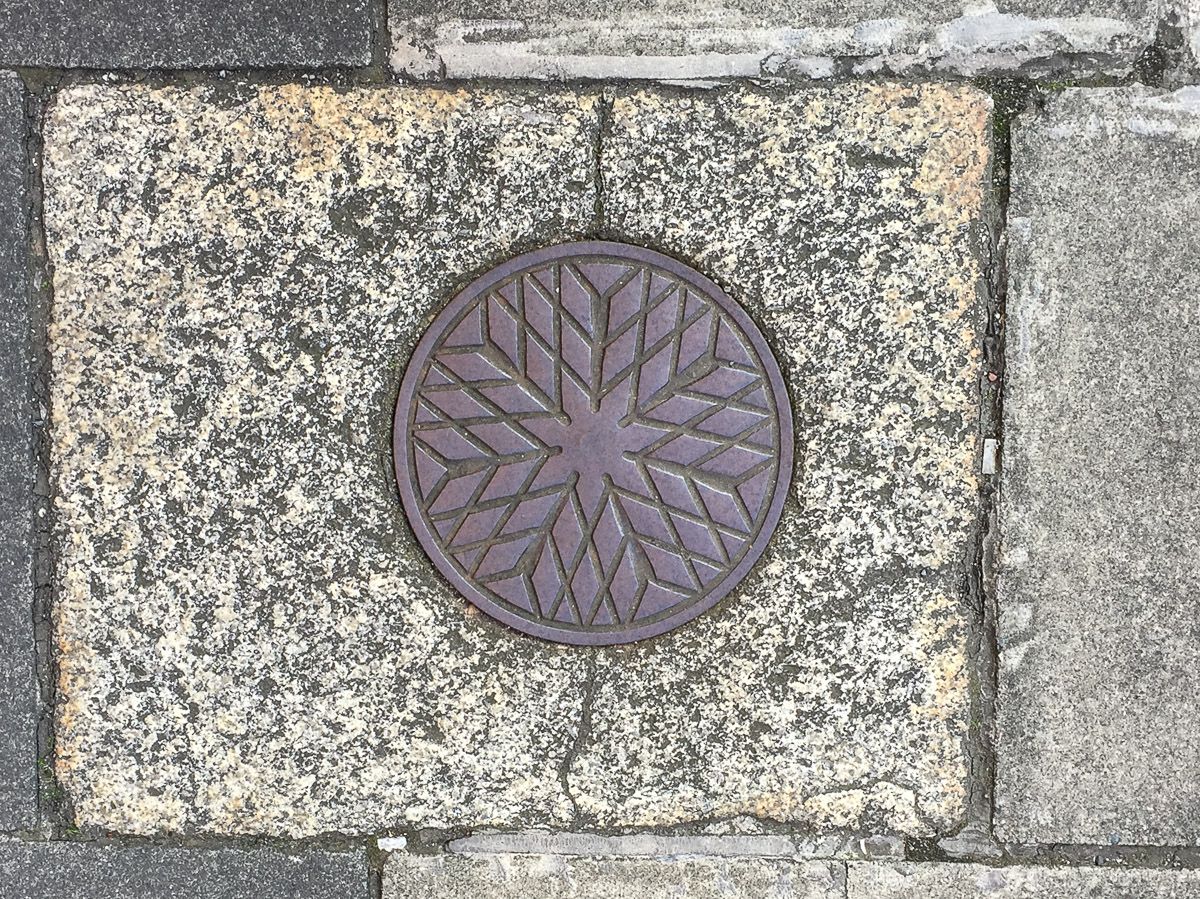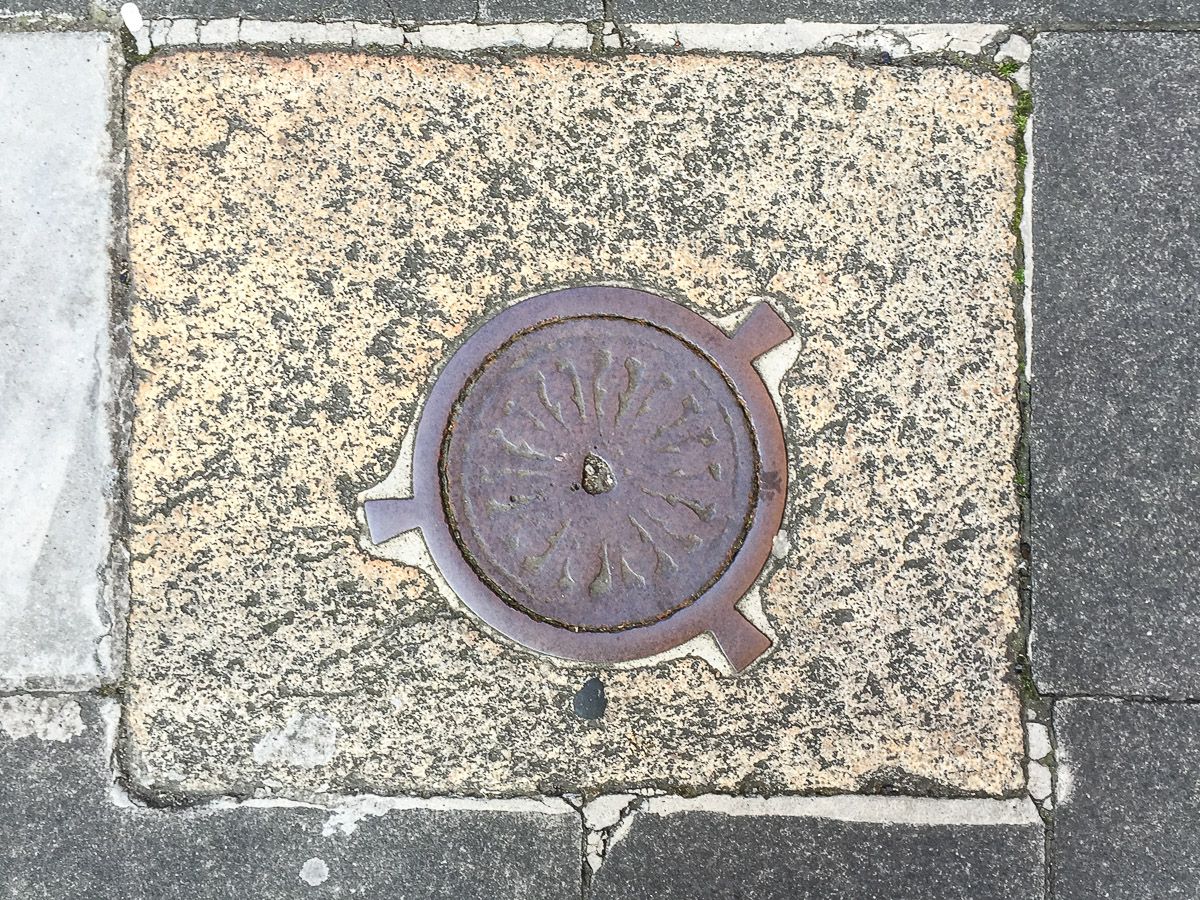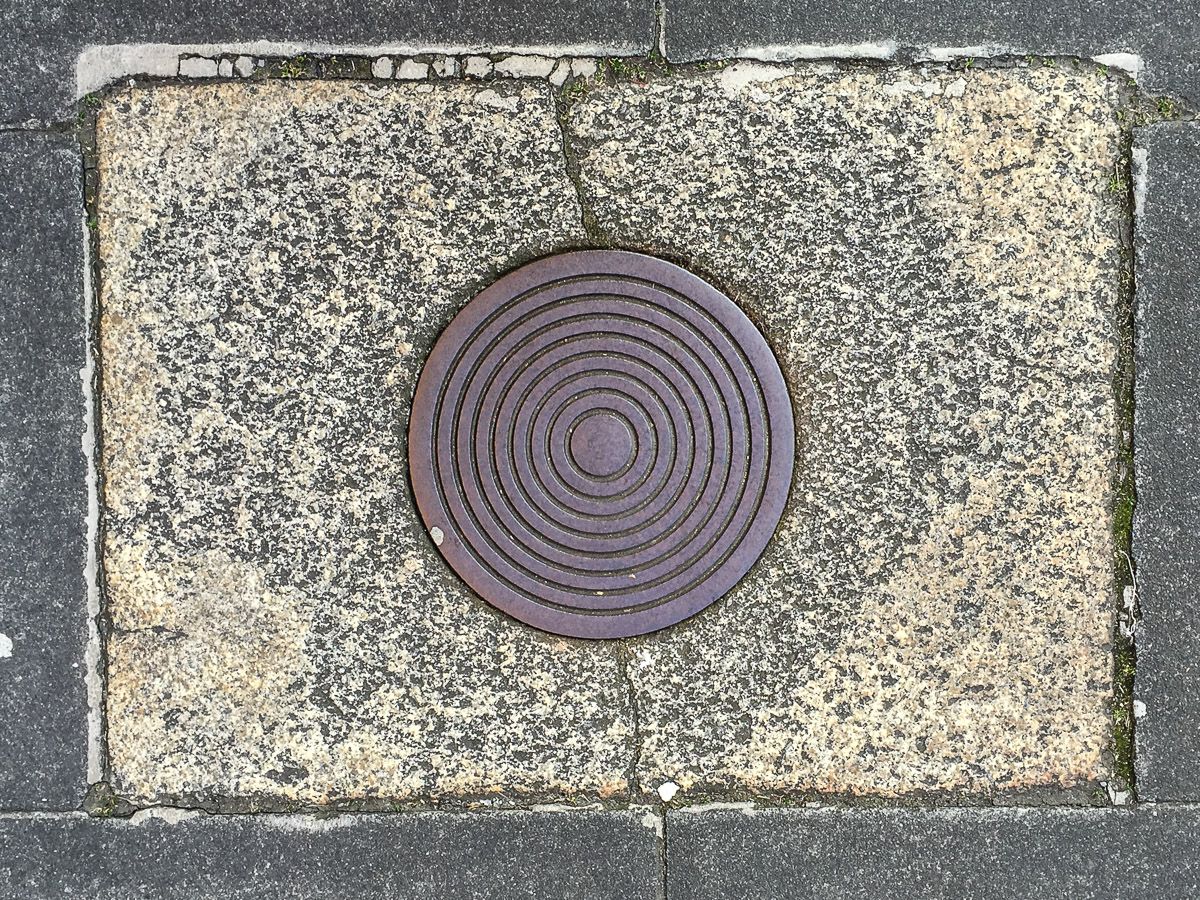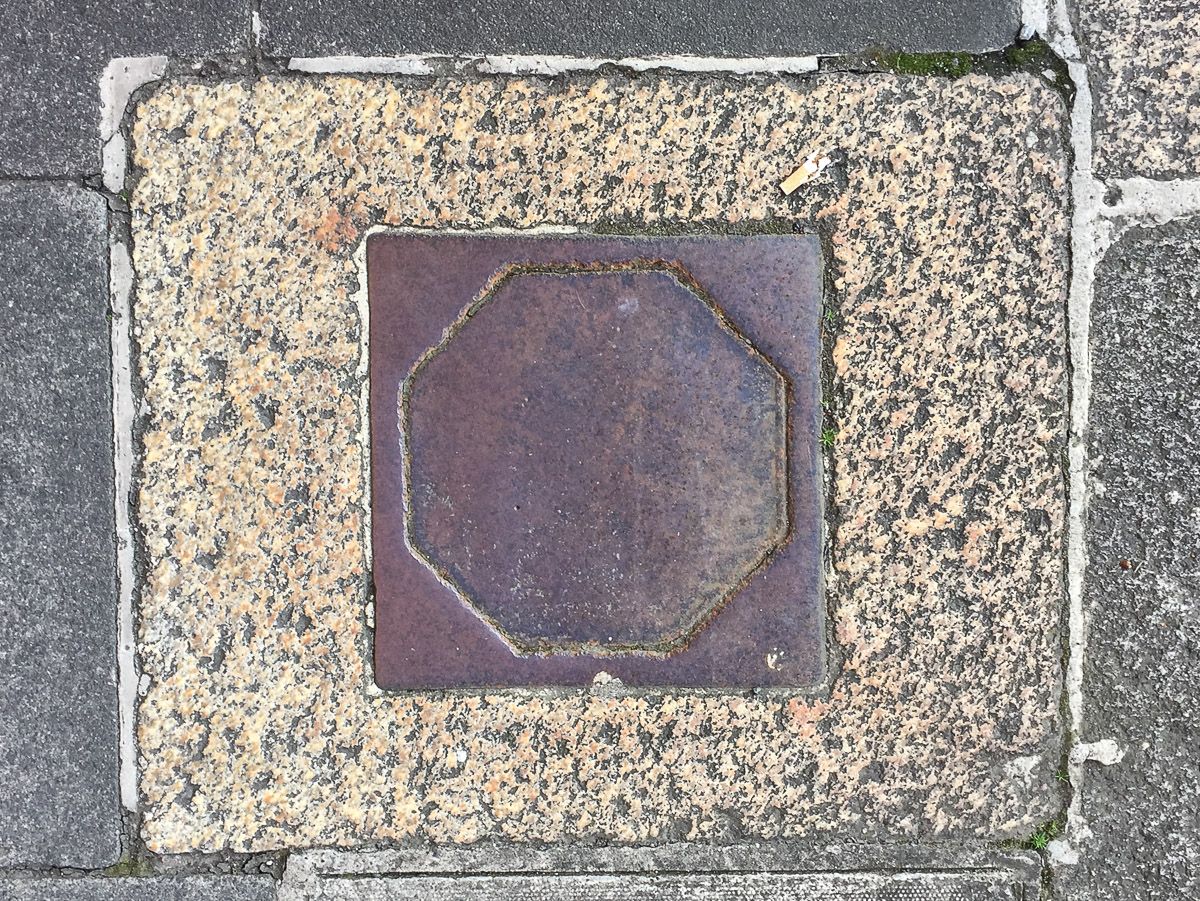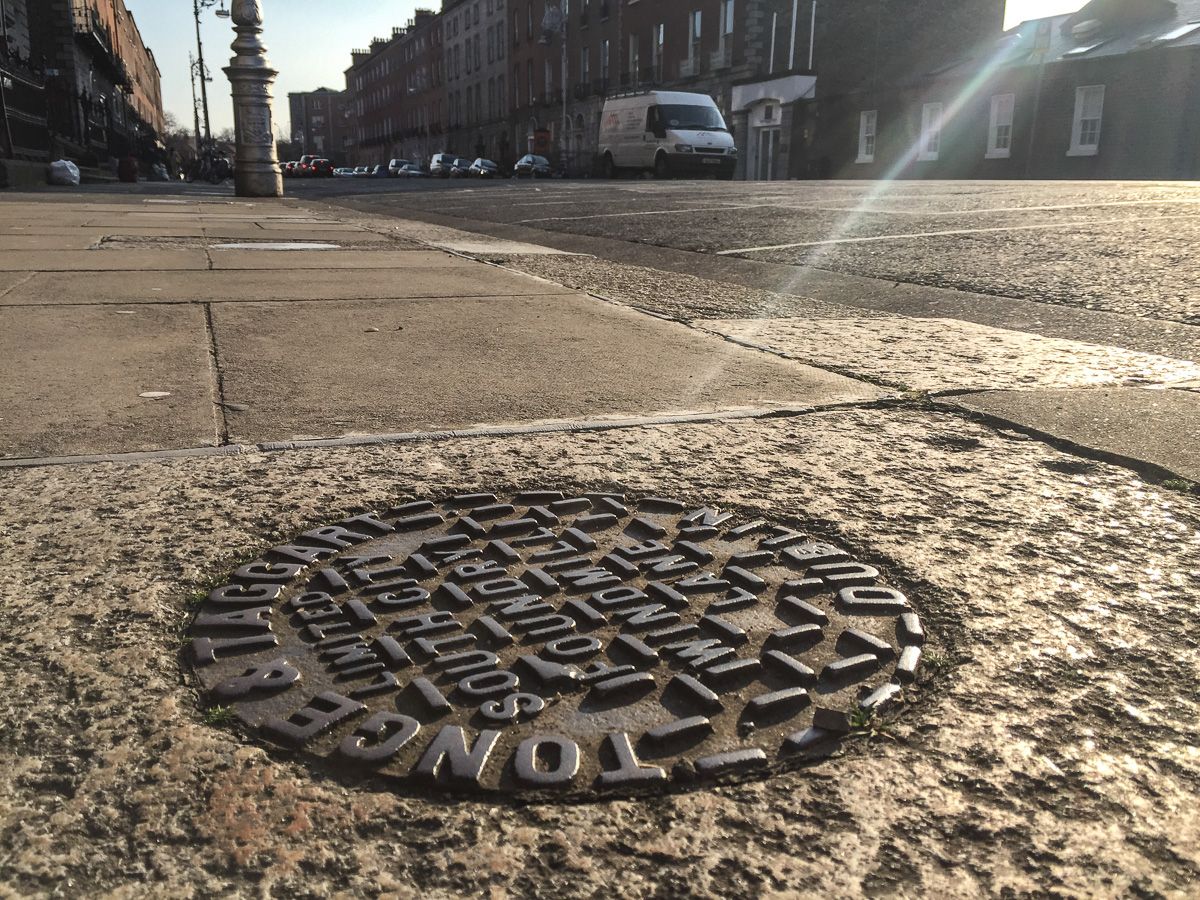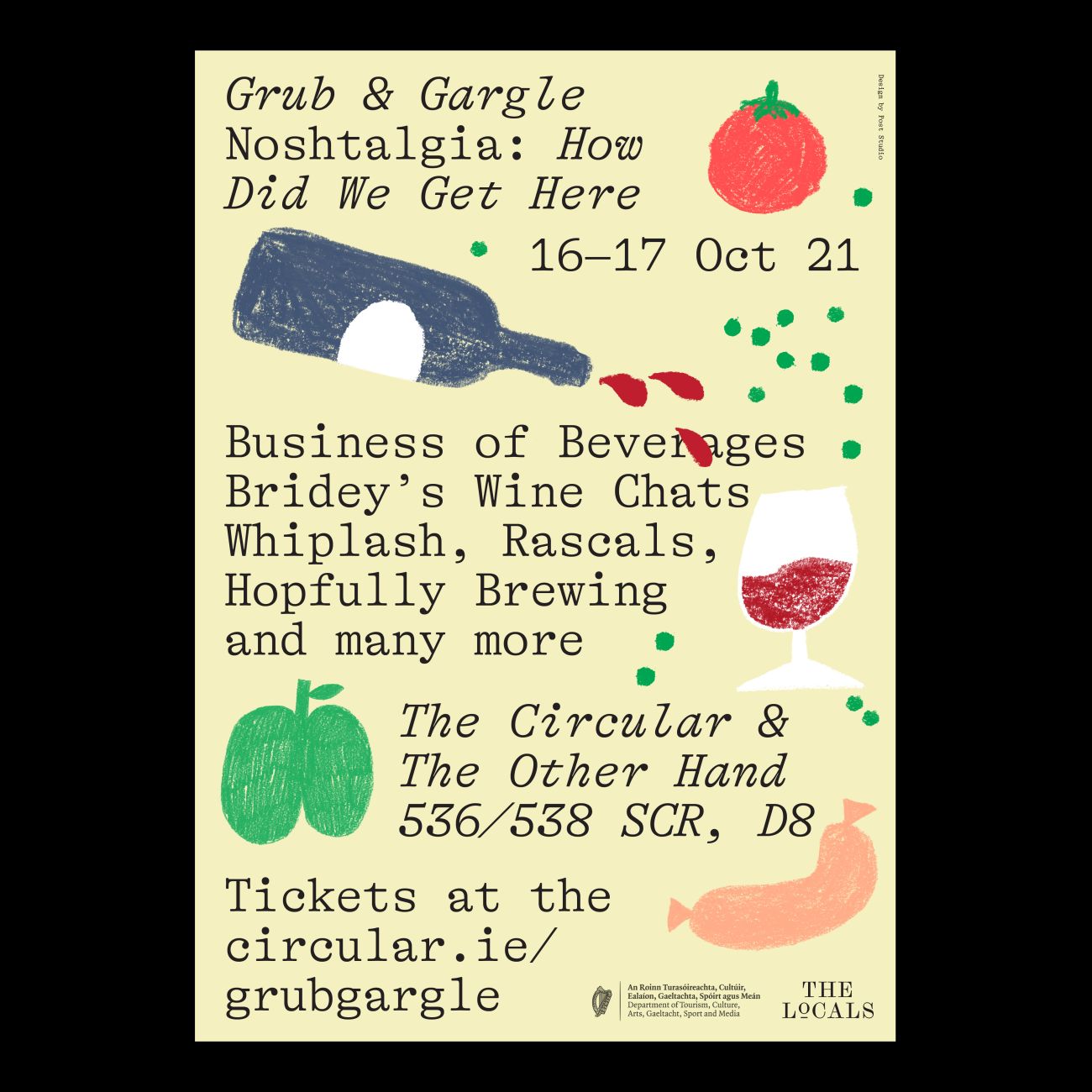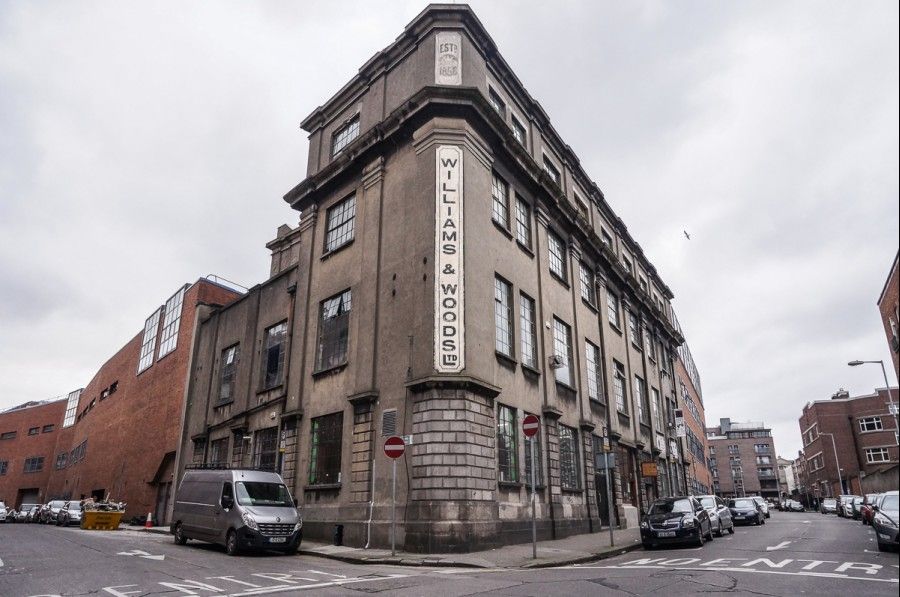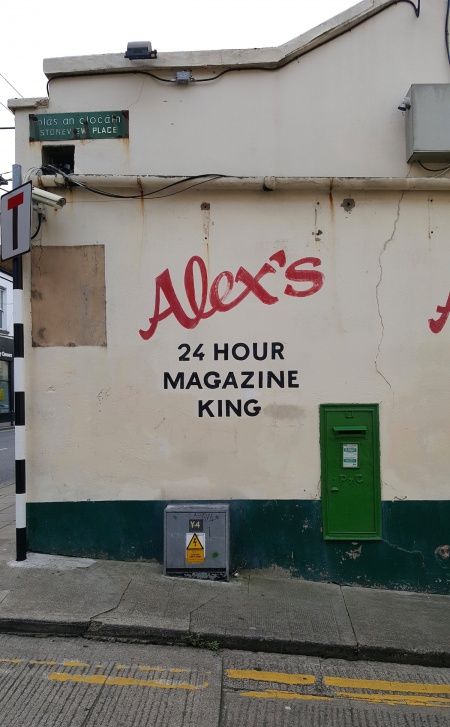Dublin Coal Holes
Stare at your feet whilst walking around Georgian and Victorian Dublin and you wont be able to go ten feet without crossing a cast-iron coal hole cover.
A common feature of Georgian and later Victorian era terraces were coal cellars built under the footpath and accessible from the basement floor of the house. In some cases these cellars extend well under the street, as the Luas building workers keep finding out. Access hatches, known as coal holes, were installed so that coal and turf deliveries could be shovelled in from the street without dragging it through the house. They are between 12" - 14” in diameter, small enough to keep all but the most svelte size 0 burglars out, and generally circular so that the lids cannot fall through the hole.
The majority of the covers were made between 1760 and 1830 in long closed foundries like Tonge and Taggart on Windmill Lane, South City Foundry on Bishop Street, Sharke’s on Church Street, Hammond Lane and T Saul & Co on Upper Leeson Street
They were all cast with lines and patterns to stop people slipping on them in the rain and frequently with the name of the foundry. Over time the covers became highly detailed with floral motifs and geometric patterns, allowing the architects and home owners to show off a bit more personality.
*Thanks to Ask About Ireland for some of the info!
